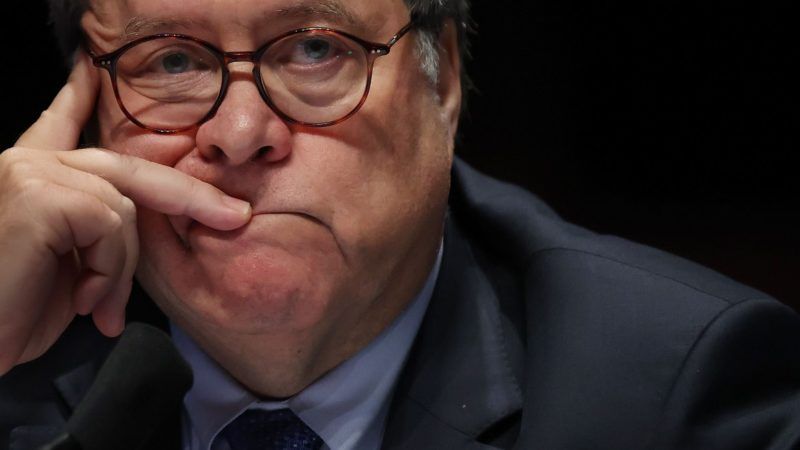The Trump Administration Prepares to Set a Modern Record for Federal Executions
Lezmond Mitchell is scheduled to die Wednesday, over the objections of the Navajo Nation to which he belongs and on whose land the murder took place.

As Republicans try to present President Donald Trump as a criminal justice reformer, his administration is about to set a modern record for executing federal prisoners.
Lezmond Mitchell, now 38, and an underage accomplice were convicted of carjacking and murdering Alyce Slim, 63, and her granddaughter, Tiffany Lee, 9, in 2001. Mitchell was 20 at the time. The feds got involved because the crime took place on Navajo land, and everybody involved (both killers and victims) were Navajo.
The teen accomplice, Johnny Orsinger, was sentenced to life in prison. Mitchell was sentenced to death. He is scheduled for to be executed by lethal injection on Wednesday.
Until Trump appointed William Barr attorney general, Mitchell was essentially serving a life sentence as well. The federal death penalty was for a time deemed unconstitutional, following a Supreme Court ruling in 1972 in Furman v. Georgia. The federal death penalty was reinstated in 1988 for a narrow class of offenses, which was then expanded in the Federal Death Penalty Act of 1994. There are currently 62 federal prisoners on death row. But before Trump's presidency, only three federal prisoners had been executed since the federal death penalty had been reinstated.
All three of those executions took place under President George W. Bush. The most famous of the prisoners killed was Oklahoma City bomber Timothy McVeigh, executed in 2001. No other administration, Democratic or Republican, had executed any federal prisoners since 1963, under President John F. Kennedy.
Last year Barr announced that the Department of Justice and federal Bureau of Prisons were reestablishing protocols to resume executions and scheduled five men for death. Three died in July. In the course of a single week, the Trump administration doubled the number of people who had been executed by the federal government in modern times.
Should the administration follow through with Mitchell, it will set a modern record. It will have executed more federal death row inmates than any other administration since Dwight D. Eisenhower's.
Leaders of the Navajo Nation do not want Mitchell executed. The tribe opposes the use of the death penalty and has been asking since 2002 for the Department of Justice to respect its sovereignty. Mitchell's lawyers claim this is the first time the federal government has attempted to execute an inmate for a crime on tribal land over that tribe's objections. The National Congress of American Indians, a 70-year-old nonprofit advocacy group that lobbies for tribal nations on sovereignty issues, sent a letter to Trump on August 18 asking for him to grant Mitchell clemency. The Intercept's Liliana Segura reports that Marlene Slim, the daughter of Alyce and mother of Tiffany, objected to federal government seeking the death penalty against Mitchell, complaining in 2003 that her opposition was "ignored and dishonored." The child's father, however, does support Mitchell's execution.
Mitchell's lawyers have asked the Supreme Court to intervene, and they've sent a clemency request to Trump. Today Mitchell's lawyers filed a complaint in the U.S. District Court for the District of Columbia to ask that the execution be delayed until such time Trump decides whether to grant clemency.
A fifth federal execution is scheduled for Friday—of Keith Dwayne Nelson, who was convicted of kidnapping, raping, and strangling a 10-year-old girl in 1999.
While Mitchell and his lawyers aren't claiming that he is innocent, a return to federal executions does mean an increasing likelihood that an innocent prisoner will be executed. The Death Penalty Information Center keeps track of cases where people on death row have subsequently been exonerated for their crimes. A scroll down the list shows that nearly every single year since 2000, at least one death row inmate has been exonerated and had his charges dismissed. There have been three exonerations in 2020 alone.
An execution can't be taken back. State-level executions have been on the decline since 2000. The number of death-row inmates that have been freed—170 since the 1970s—should inspire skepticism about the government's ability to limit its killings to the guilty.


Show Comments (69)